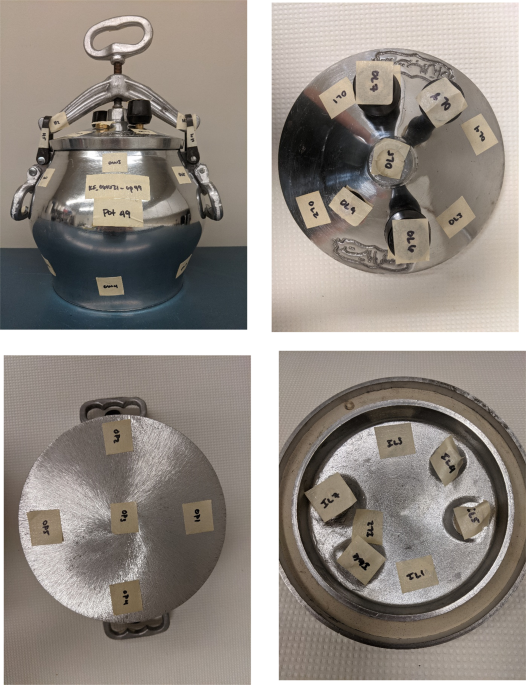|
Medicine by Alexandros G. Sfakianakis,Anapafseos 5 Agios Nikolaos 72100 Crete Greece,00302841026182,00306932607174,alsfakia@gmail.com,
Αρχειοθήκη ιστολογίου
-
►
2023
(272)
- ► Φεβρουαρίου (141)
- ► Ιανουαρίου (131)
-
▼
2022
(2066)
- ► Δεκεμβρίου (80)
- ► Σεπτεμβρίου (170)
-
▼
Μαΐου
(175)
-
▼
Μαΐ 02
(12)
- Unsuspected clonal spread of Methicillin-resistant...
- Investigating aluminum cookpots as a source of lea...
- The tight rope act: A multicenter regional experie...
- Extravasation and outcomes in computed tomography ...
- Life threat during assaultive trauma: Critical pos...
- Evaluating the complex association between Social ...
- Prehospital low titer group O whole blood is feasi...
- The effect of tranexamic acid dosing regimen on tr...
- Direct to OR resuscitation of abdominal trauma: An...
- Beta blockade in TBI: Dose-dependent reductions in...
- DNA Methylation subclass Receptor Tyrosine Kinase ...
- Artificial Enamel – Stronger and Durable finds oth...
-
▼
Μαΐ 02
(12)
- ► Φεβρουαρίου (190)
- ► Ιανουαρίου (203)
-
►
2021
(7399)
- ► Δεκεμβρίου (186)
- ► Σεπτεμβρίου (472)
- ► Φεβρουαρίου (851)
-
►
2020
(2517)
- ► Δεκεμβρίου (792)
- ► Σεπτεμβρίου (21)
- ► Φεβρουαρίου (28)
-
►
2019
(12076)
- ► Δεκεμβρίου (19)
- ► Σεπτεμβρίου (54)
- ► Φεβρουαρίου (4765)
- ► Ιανουαρίου (5155)
-
►
2018
(3144)
- ► Δεκεμβρίου (3144)
Ετικέτες
Πληροφορίες
Δευτέρα 2 Μαΐου 2022
Unsuspected clonal spread of Methicillin-resistant Staphylococcus aureus causing bloodstream infections in hospitalized adults detected using whole genome sequencing
Investigating aluminum cookpots as a source of lead exposure
|
The tight rope act: A multicenter regional experience of tourniquets in acute trauma resuscitation
|
Extravasation and outcomes in computed tomography and angiography in patients with pelvic fractures requiring transcatheter arterial embolization: A single-center observational study
|
Life threat during assaultive trauma: Critical posttraumatic stress disorder risk factors for injured patients
|
Evaluating the complex association between Social Vulnerability Index and trauma mortality
|
Prehospital low titer group O whole blood is feasible and safe: Results of a prospective randomized pilot trial
|
The effect of tranexamic acid dosing regimen on trauma/hemorrhagic shock-related glycocalyx degradation and endothelial barrier permeability: An in vitro model
|
Direct to OR resuscitation of abdominal trauma: An NTDB propensity matched outcomes study
|
Beta blockade in TBI: Dose-dependent reductions in BBB leukocyte mobilization and permeability in vivo
|
DNA Methylation subclass Receptor Tyrosine Kinase II (RTK II) is predictive for seizure development in glioblastoma patients
|
Αναζήτηση αυτού του ιστολογίου
! # Ola via Alexandros G.Sfakianakis on Inoreader
-
Does CBD Oil Lower Blood Pressure? This article was originally published at SundayScaries." Madeline Taylor POSTED ON January 13, 20...
-
The device, cleared in Europe a couple of years ago, is used to ablate cardiac tissue as part of treatment for atrial fibrillation. It featu...
-
Overdue: a US advisory board for research integrity Overdue: a US advisory board for research integrity, Published online: 11 February 201...










